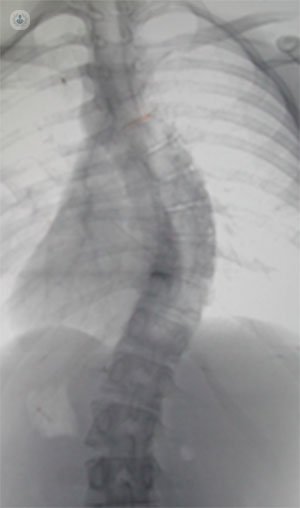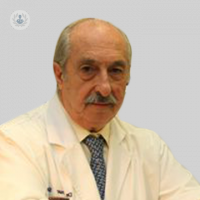6 frequently asked questions about scoliosis
Written by:Scoliosis is a malformation of the vertebrae that causes an abnormal deviation of the spine, which can be in the form of "S" or "C". In most cases, it is not known at all the cause of this disease, although there are many investigations in the world of Traumatology pointing, environmental, genetic factors of development, etc.

What types of scoliosis there?
Scoliosis is generally a condition that usually classified into two types according to their origin: congenital or acquired.
When the origin is congenital, usually either it born with it and develops as the child grows gradually until adulthood. Congenital scoliosis may have two origins:
- Default segmentation of the vertebrae during the embryonic period: produces a congenital fusion of two or more vertebral bodies on one side, so that develops more vertebrae on one side than the other and causes an inclination of the upper vertebrae and lower .
- Hemivertebrae: are asymmetrically develop vertebrae (wedge-shaped viewed from front) and produce a wedging of the vertebral segment where they are, so that the column is more inclined to one side than another.
As scoliosis acquired, also called idiopathic scoliosis, it is one that develops during childhood. This type of scoliosis is not predictable but can prevent its development and worsening once it is discovered, either because parents look on the back of your children or for medical examinations that are done in schools.
What complications may have scoliosis?
If not treated, this condition can basically have three negative effects:
- Increasing the degree of the curve of the spine: if it is discovered in a patient 13 years a curve about 12⁰ of magnitude and not treated in time, this curve can increase to up to 30⁰ after eight or nine months and even the 45⁰ in two years or three. This means that it will be harder and harder and cost more to reach as initial values.
- Loss of flexibility of the spine: if not treated early scoliosis, the patient's spine can become stiff and lose its flexibility.
- The curves of the column of more than 50 and up to 80º to 100º figures, which can even reach 120 degrees or more, it is the ultimate consequence of not having treated a scoliosis in time. This curve has major deformities of the trunk and ribs, so vital breathing capacity decreases and increases the risk of lung infections. In addition, it can affect abdominal organs and vessels and generate significant spinal pain or other problems in the spine as degenerative disc disease with disc herniation and spinal stenosis.
So, once detected scoliosis, either congenital or acquired, should be treated as soon as possible to prevent it can develop and get worse and not end up affecting the spine, the trunk or the ribcage.
Does scoliosis may develop in adulthood?
Scoliosis can be generated in patients from 50 or 60 years especially in those with a combination of osteoporosis and / or spinal osteoarthritis and degenerative disc disease (disc wear). This combination can cause a inclinations of two or three vertebras rotation thereof that end up producing what is called degenerative adult scoliosis.
This type of scoliosis is usually located in the lower back or the back-lumbar and requires careful treatment including recalcification of those vertebras, rehabilitation programs, use of orthopedic corsets, body weight control and healthy physical activity. In some cases, when the pain is important and scoliosis produces another series of neurological effects, surgical intervention is necessary.
Does scoliosis affects more men or women?
Overall, scoliosis is a condition that affects nearly triple to women than men. This fact may have a genetic meaning, where women by their genes is most favored to suffer this disorder.
What sports are good for scoliosis?
Sport in general, especially swimming or pilates, is a magnificent treatment element of such deformities because it keeps the entire spine supple and builds all the muscles symmetrically.
How is scoliosis?
First, we must make a clinical and radiological study of patients and, depending on the age, size, degree of bone development, type of scoliosis curve magnitude and socio-family conditions, shall be adopted in each case type of treatment.
When the curve of the column is small, in some cases simply rehabilitation and other necessary adapt a more or less rigid or flexible depending on the locations and the curve structuring corset.
If the age of the patient is a teenager or an adult and the degree of the curve exceeds 45-50o, sometimes it is necessary to perform surgery to correct and prevent worse complications.


